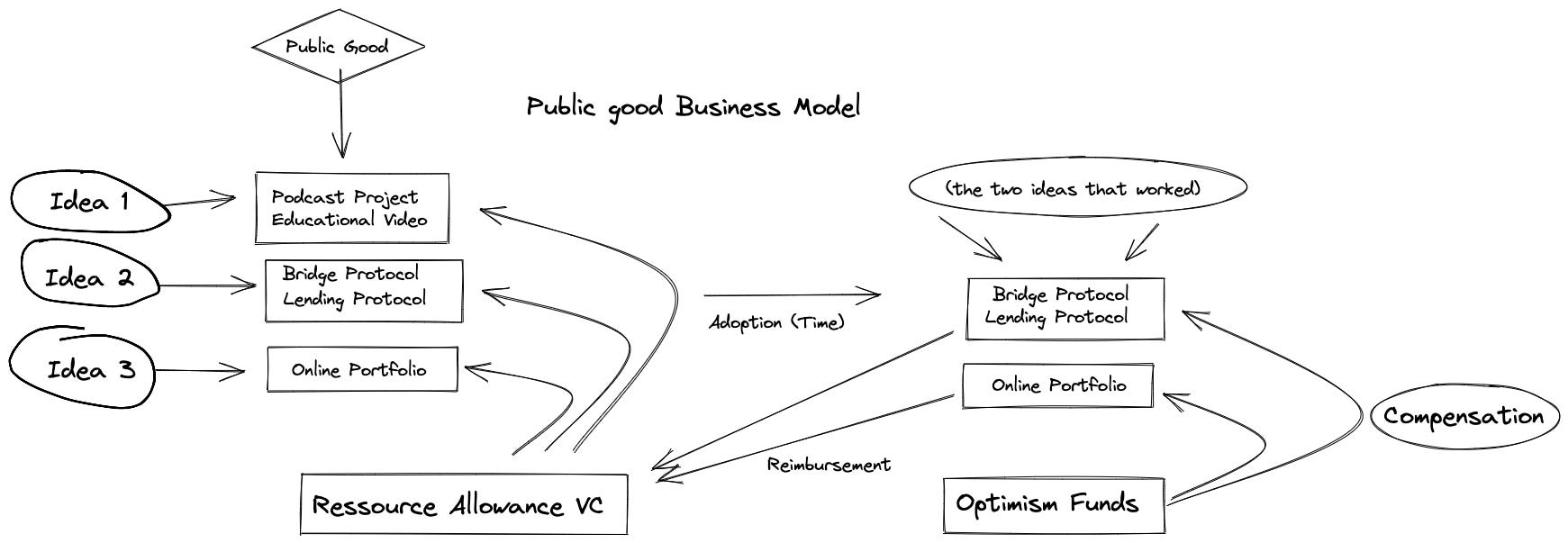The Silicon Valley business model tailored to the creation of public goods (ENG Version)
The Retroactive public goods funding could change everything about our vision of innovation.
Hello and welcome to my very first newsletter which will discuss today what could be the next Alpha of the Defi ecosystem.
Of course, this is not investment advice and I recommend that everyone does their research. (DYOR 4 Life)
1. What does the Silicon Valley business model look like?
"The end justifies the means". This is the paradigm based on the thesis that despite the significant chance that a project will be millions of dollars in the red for years to come, the exit door will always be within reach.
Of course, there are limits to this model. Risks and consequently a strong centralization are representative of the Silicon Valley-ish model. But there is a way out.
The same cannot be said for the creation of public goods ^^
2. The creation of public goods, a non-existent business model (for the moment ;))
The term "public good" in this text encompasses explicitly crypto-related public goods such as blockspace; open-source protocol/dapps; educational resources etc... These are by nature considered projects with no business plan and no real direct profit opportunities. However, many of these projects require an investment of time and capital to develop. They subsequently generate considerable potential gains for users of these public goods.
There is thus a considerable asymmetry in the very existence of a public good:
1. There is no business plan that can be profitable
2. It is necessary to use resources that are not free,
3. Users can generate millions of dollars in profit without any developer being rewarded.
In short, there is no way to motivate the brains of the little geniuses of the net to build a public good and this has been the case since the dawn of time.
But all that will now change with the existence of retroactive public good funding.
3. What is retroactive public good funding?
This concept was created by the Optimism team, notably by Karl Floersch, a prominent figure among the very first Ethereum builders.
Optimism is a Layer 2. It is an additional layer to a layer 1 blockchain (Ethereum). It has the same level of security for block validation. It is also accompanied by more powerful means of arbitration and optimization of transactions. This increases scalability without affecting security. This project aims to use funds collected through transaction fees, residues of MEV (Miner Extractable Value), etc. Today represents tens of millions of dollars, but could quickly become several billion depending on the level of adoption of the blockchain.
The purpose of these funds will be to retroactively finance the creators of public good. These ideas will have revealed in the long run a considerable help, tool and support for the community. And this is how we can objectively see the first profitable business model for the creation of a public good in the history of Internet.
This process has already been used in Beta on the Optimism blockchain by distributing $1M to 58 projects:


22 badge holders were in charge of selecting the most relevant projects through a voting system. However, the governance and voting process is still under review as Karl Floersch explains in an interview on Bankless.
Eventually, this new business model will have the virtue of encouraging innovation and content creation and will finally be able to pay the philanthropic builders of tomorrow.
4. Conclusion and outlook on the future
Despite the fall in the crypto markets and the uncertain situation from a macro perspective, the web3.0 community keeps creating. Thanks to crowdfunding, there is now a real incentive to create public goods that really help users. I will surely make an additional part to this article to come back in more details on how to participate to this project by being a builder or investor.
Don't hesitate to follow me on Twitter!




